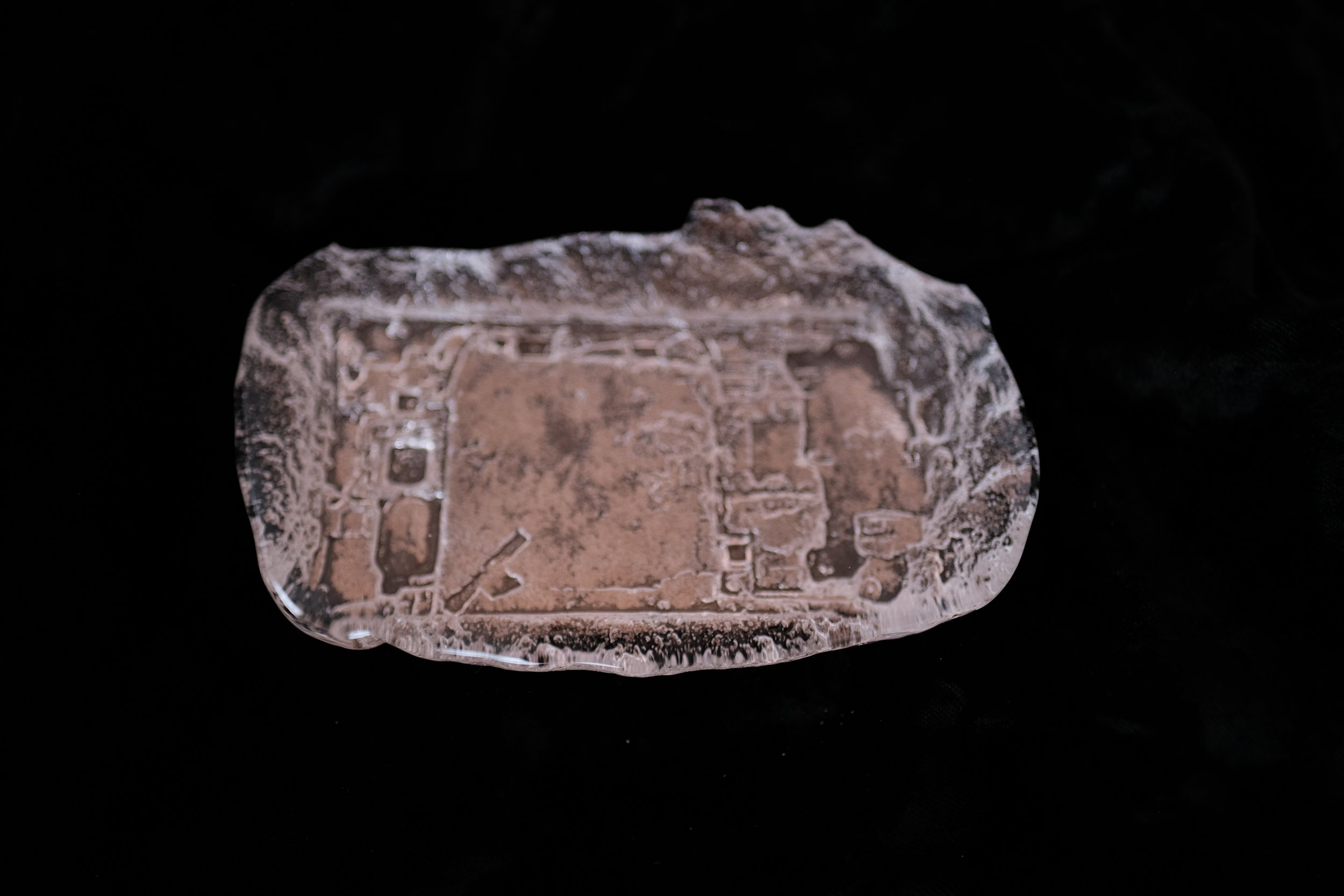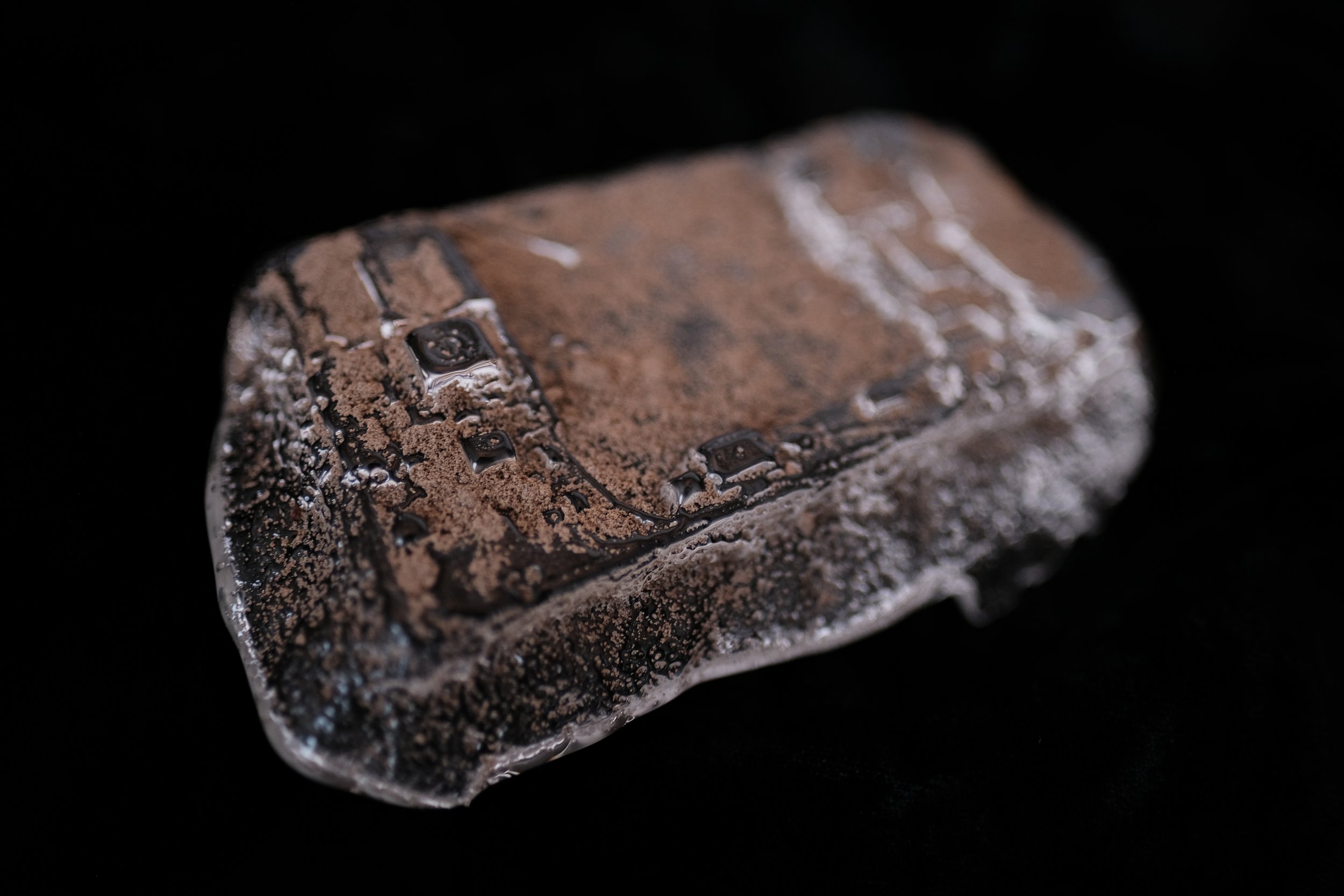Changing an object’s material ultimately transforms how that object is perceived. I transform mass consumerist icons, like credit cards and cell phones, into glass objects that critique the everyday American experience in the 21st century, especially popular culture.
Like a fossil collected by museums, this object illustrates our current climate. Technology has become a fetish figure of our time, something like a new religion that is worshiped, while simultaneously hurting the environment. By juxtaposing the readymade with the handmade in glass, the sacredness of these objects can be seen.
Ancient techniques, like pate de verre and mosaic are mixed with contemporary subjects like cell phones and credit cards to compare what is sacred. By juxtaposing the mediums of ancient religious art with today’s readymades, the sacredness of these objects can be seen. Ultimately, the loss of resources, like the polar ice caps, and problems with mental health are due to human activity and these advancements in technology. The same technology that simplifies life by providing more functions in each device is now providing us less of a future.
The use of glass, like the stained glass I use in the mosaics, harkens back to church windows and a holy past. By using glass in reproductions of 21st century objects, like logos, cell phones, and more, the sacredness technology has in our lives can be easily seen.
Technology does not love you. In America, nothing is sacred anymore. Advancements in technology create social wounds. Trends are the same idea recycled into a new form to trick you. Social media eats your time and tracks your competitive existence.
These are the objects they found during an excavation in 2500:
Vitrified cell phones (Cellphonus amongus)
Process shot of molten glass being poured into sand for “sandcast glass” sculptures, like the ones pictured above. This is a mold of a keyboard being poured into with glass.




